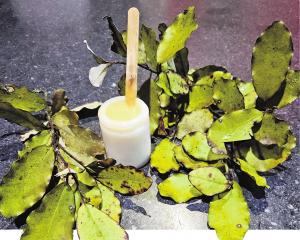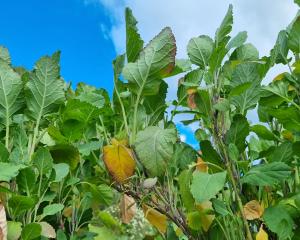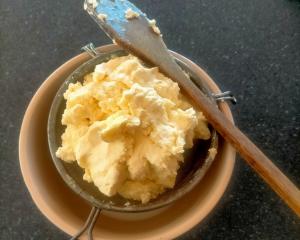

Fortunately, our yacon is much nicer, tastier and more nutritious than that other stuff.
Yacon is a much treasured plant in Peru and is known as the Peruvian ground apple. It is related to the artichoke and sunflower family, and grows very easily from a little starter root, planted in loose soil, and with no care at all becomes a big lush plant with numerous big brown crunchy sweet tubers under each, which can be harvested after the frosts kill off the tops in early winter.
Yacon has the texture of a nashi pear - very crunchy, sweet and juicy and is easily turned into a variety of sweet treats. It can be chopped and used in a stir-fry and has a water chestnut texture, it can be eaten raw, or grated into a salad. It can be sliced, dried and ground into flour, which can be used directly as a sugar substitute.

Once juiced, pour the juice into a big deep pot and bring it up to a rolling boil. A scum will form on top, but don’t worry about this, just stir the pot fairly frequently until the juice reduces down into a syrup about the thickness of maple syrup. Pour your syrup into a sterilised jar. It thickens as it cools, so a wider-necked jar is better than a bottle.
I poured ours over a batch of hot cakes with a yoghurt topping. The syrup is a dark brown colour and has a sort of caramel/treacle flavour. Mr Fussy taste-test guy declared it pretty nice.
Here is the exciting news, though yacon syrup or powder tastes sweet and your taste buds register it as sweet, it does not actually get metabolised so it gives your gut microbes a real prebiotic treat. It is high in fibre, and has been linked to promoting weight loss, regulating blood sugar levels and helping prevent diabetes. It is also thought yacon might help your body absorb essential vitamins and minerals, and contribute to strong bone density. It is fairly low carbohydrate and low calorie.

The powdered yacon sounds pretty easy too. Peel the tubers, slice them into 1cm rounds and soak those in a citric acid solution (to stop them going a dark colour). Dehydrate at about 50-60°C, then grind into a powder and store. You can use it as a total replacement for sugar in baking.
It is amazing stuff. I’m definitely going to plant more and try all the different ways of eating it.
So now that we have fibre broadband installed, we also have a source of really sweet tasty fibre for our healthy gut microbes. Those Chorus technicians would be totally impressed rather than horrified.













